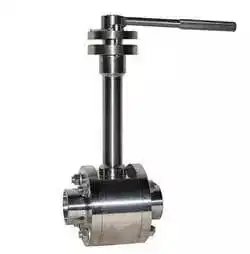The extended bonnet is used to specify low temperature valves including low temperature emergency shut-off valves, low temperature shut-off valves, low temperature check valves, LNG-specific cryogenic valves, and NG-specific cryogenic valves, which are mainly used in chemical plants of such as 300,000 tons of ethylene and liquefied natural gas. The output of liquid low-temperature media such as ethylene, liquid oxygen, liquid hydrogen, liquefied natural gas, liquefied petroleum products, etc., not only is flammable and explosive, but also vaporizes when heated, and expands several hundred times in volume when gasified.
The extended bonnet is specified for the below reasons:
(1) The extended bonnet has the function of protecting the stuffing box of the low temperature valve, because the sealing function of the stuffing box is one of the keys of the cryogenic valve. If the packing box leaks, it will reduce the cooling effect and cause the liquefied gas to vaporize. In the low temperature state, as the temperature decreases, the elasticity of the filler gradually disappears, and the leakage prevention performance decreases. The leakage of the filler and the stem is caused by the leakage of the medium, which will affect the normal operation of the valve stem and also causes the valve stem to move up and down. The filler is scratched and causes a serious leakage. Therefore, it is necessary to ensure that the temperature of the filler crucible is above 8 °C.
(2) The extended bonnet structure facilitates the winding of the cold-preserving material to prevent the cold energy loss of the low temperature valve.
(3) The long neck structure of the low temperature valve facilitates the quick replacement of the valve's main part through the valve cover. Since the process piping and valves in the cold section of the equipment are often installed in the 'cold box', the long-neck bonnet can protrude through the 'cold box' wall. When replacing the valve's main part, it is only necessary to replace it through the valve cover without removing the valve body. The valve body is welded to the pipe to reduce the leakage of the cold box as much as possible, and the sealing performance of the valve is ensured.

